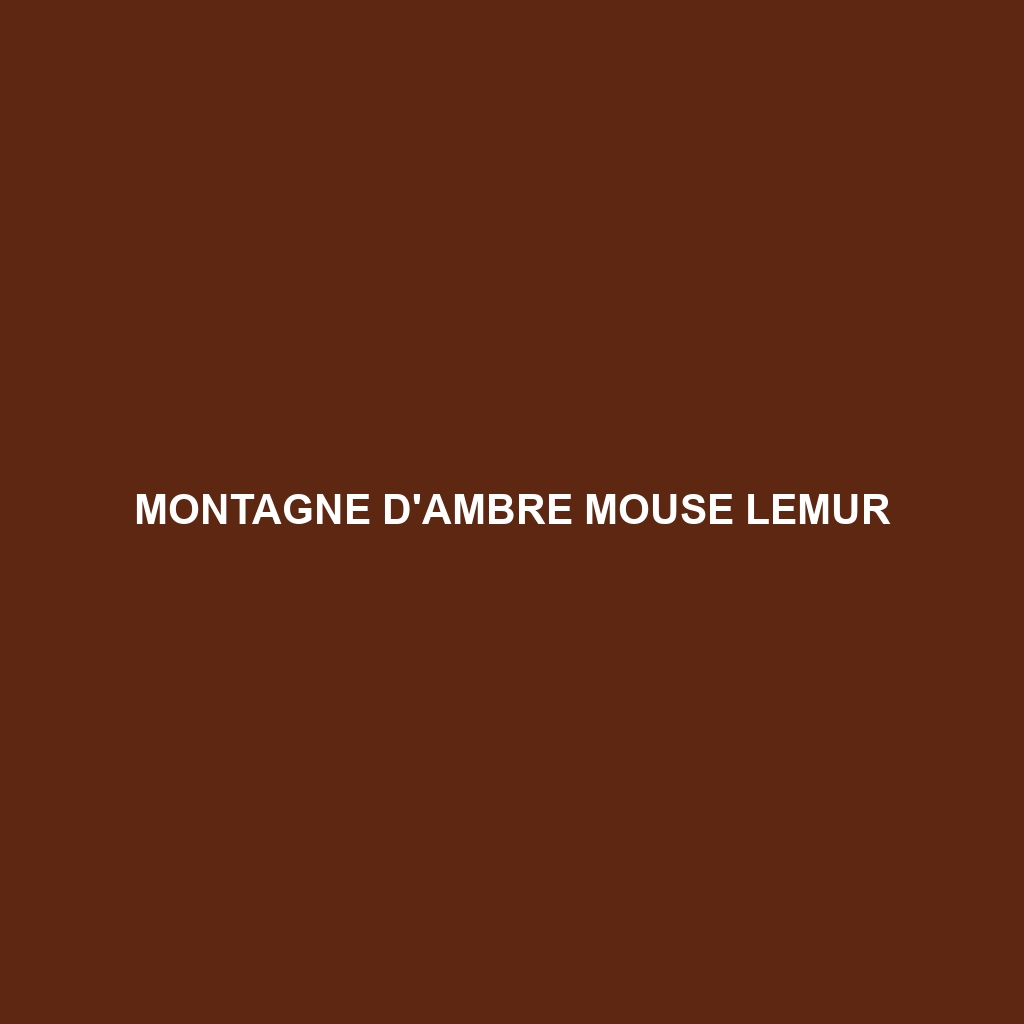Madame Berthe’s Mouse Lemur
Common Name: Madame Berthe’s Mouse Lemur
Scientific Name: Microcebus berthae
Habitat
Madame Berthe’s Mouse Lemur is primarily found in the biodiverse rainforests of Madagascar, specifically within the Kirindy Forest Reserve. This species is adapted to the warm, humid climate and thrives in areas abundant with dense vegetation that provides shelter and food sources. The specific forest layers where they reside are crucial for their survival, as they prefer regions with ample bamboo and fruiting trees.
Physical Characteristics
This fascinating primate is notably the smallest species of mouse lemur, measuring about 9 to 10 centimeters in body length, with a tail that can be up to 13 centimeters long. Their fur is typically a soft brownish-grey, with a darker back and lighter underside, providing excellent camouflage in their forest environment. Distinctive features include large, expressive eyes that aid in their nocturnal activities, along with rounded ears and a flat face, which contributes to their unique appearance.
Behavior
Madame Berthe’s Mouse Lemur is primarily nocturnal, displaying a variety of interesting behaviors. During the night, they are highly active, engaging in foraging and social interactions. These lemurs are known to exhibit a range of vocalizations, which are crucial for communication within their small groups. They tend to be solitary but can sometimes be seen in small family units, reflecting a complex social structure.
Diet
The diet of Madame Berthe’s Mouse Lemur is primarily frugivorous, consisting mainly of fruits, insects, and blossoms. They are particularly fond of ripe fruits, which are abundant in their forest habitat. In addition, their feeding habits contribute significantly to seed dispersal in the ecosystem, facilitating forest growth and regeneration.
Reproduction
The breeding season for Madame Berthe’s Mouse Lemur typically occurs in the mid to late rainy season, around December to January. Females usually give birth to a single offspring after a gestation period of approximately 60 days. Maternal care is vital during the early weeks, and young lemurs cling to their mother’s belly while being transported from one location to another.
Conservation Status
Currently, Madame Berthe’s Mouse Lemur is classified as Endangered by the International Union for Conservation of Nature (IUCN). Threats to its survival include habitat destruction due to deforestation, agriculture expansion, and the impact of climate change on its native forests.
Interesting Facts
Madame Berthe’s Mouse Lemur has a unique adaptation that allows it to enter a state of torpor, greatly reducing its metabolic rate and energy needs during cooler temperatures or when food is scarce. This impressive ability helps it to survive in an unpredictable environment.
Role in Ecosystem
As a small primate, Madame Berthe’s Mouse Lemur plays a crucial role in its ecosystem. Through their diet of fruits and insects, they contribute to pollination and seed dispersal, assisting in the maintenance of forest biodiversity. Their presence indicates a healthy forest ecosystem, underscoring their importance in the intricate web of life in Madagascar.
